Ten old photographs of Ipswich
- Published
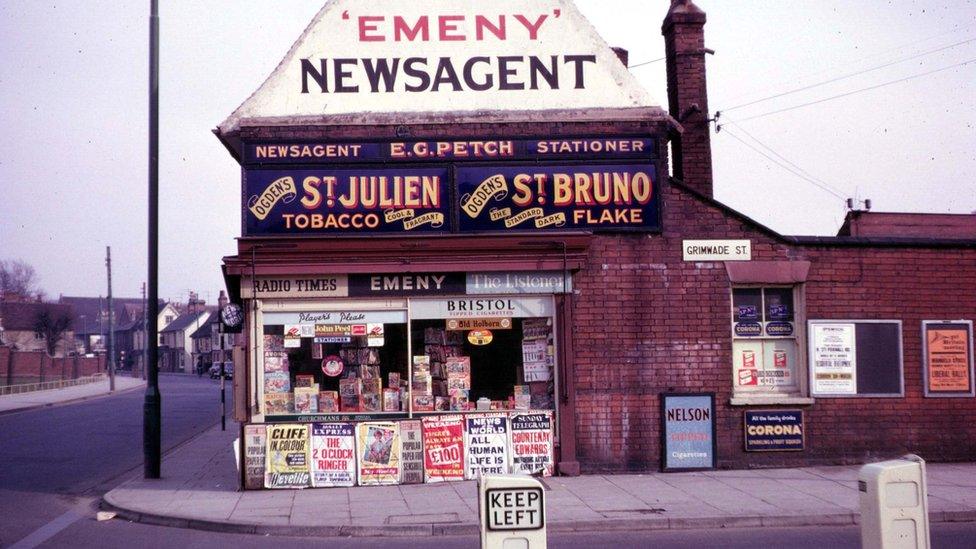
Grimwade Street, 1960s
The Ipswich Society has spent eight years digitising more than 6,000 photos, showing how Suffolk's county town has changed over the decades. Tony Marsden, vice-chairman of the society, has dipped into the archive to select 10 of his favourite images and explain why they stand out.
There is still a newsagent trading under the name on this corner (above) but the billboards and enamelled metal signs shown in this photo from the 1960s are long gone. Likewise, the keep left signs have disappeared as Grimwade Street has been one way for many years.
The complexity and fuss of the detail is seemingly at odds with the simplicity of the time on a corner then almost devoid of traffic, but which nowadays sees non-stop vehicles.

Electric House, 1960s
The building on the right is Electric House, the showrooms of Eastern Electricity Board. The large building on the left is William Pretty's corset and underwear factory, which occupied the whole area of what is now an NCP car park.
It is another example of how times change. The bicycle group about to set off for a ride around the countryside, note the clothes being worn, the variety of cycle and the industrial nature of this, the centre of town.
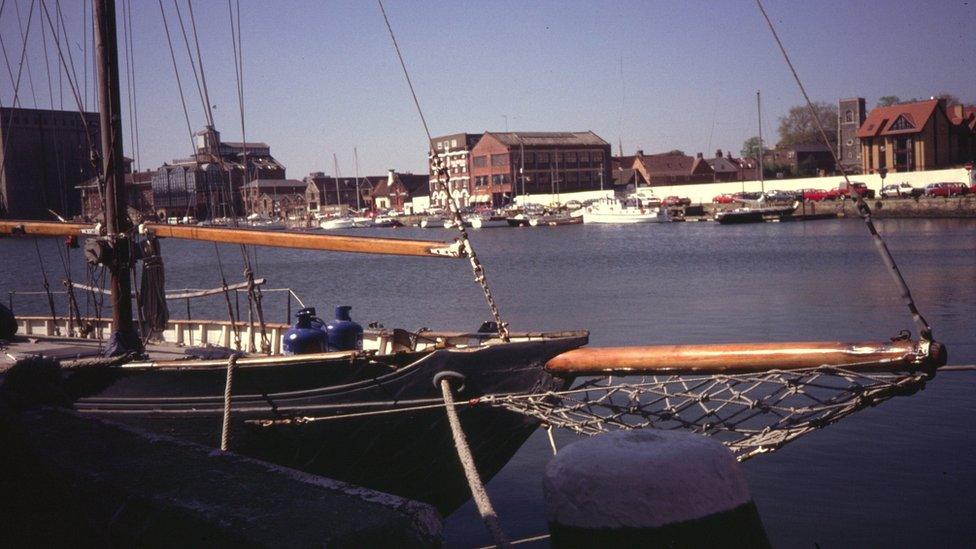
The wet dock, 1990s
This is looking northwards from Orwell Quay before the construction of Neptune Square; hence it is possible to see both the Salvation Army Hostel in Fore Street and St Clement's Church behind.
It is impossible to see this view now, owing to the construction on the northern quay, but mostly because of the profusion of cruisers and yachts which are moored in the space seen here.

Fore Street, early 1960s
This picture was taken from the position of the current Star Lane/Fore Street junction, looking north. Note the lines for the trolleybuses.
It is a sparkling image of another time, within our lifetime - trolley buses, motorbikes with kneeguards and riders sans helmets. The quality of light seems to be historic, not just the contents.
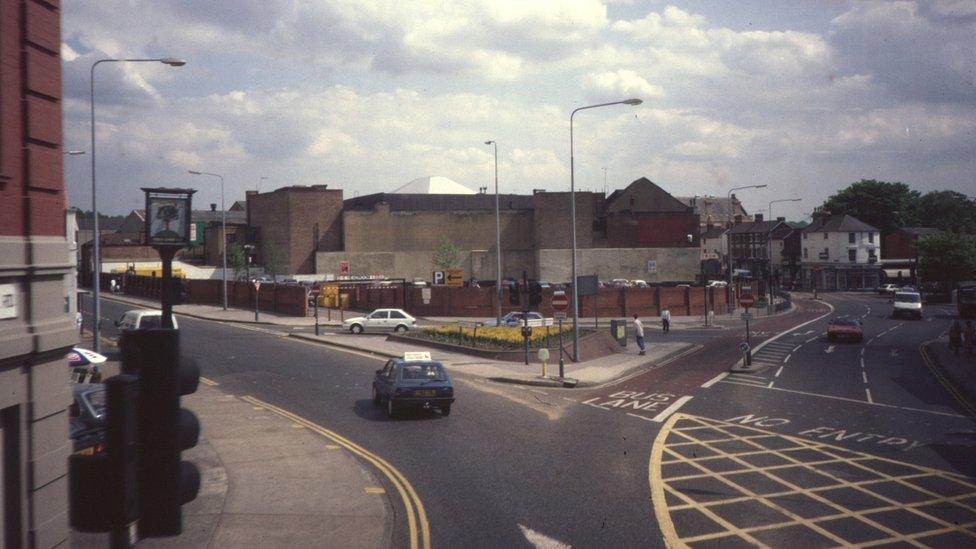
Woodbridge Road/St Margaret's Street, 1980s
A busy junction, the well-known Mulberry Tree pub on the left, at a time prior to the construction of the distinctive Odeon cinema, now itself a lifeless and apparently futureless entity.
This is yet another image of the cyclical nature of towns, this period only just about a generation ago.
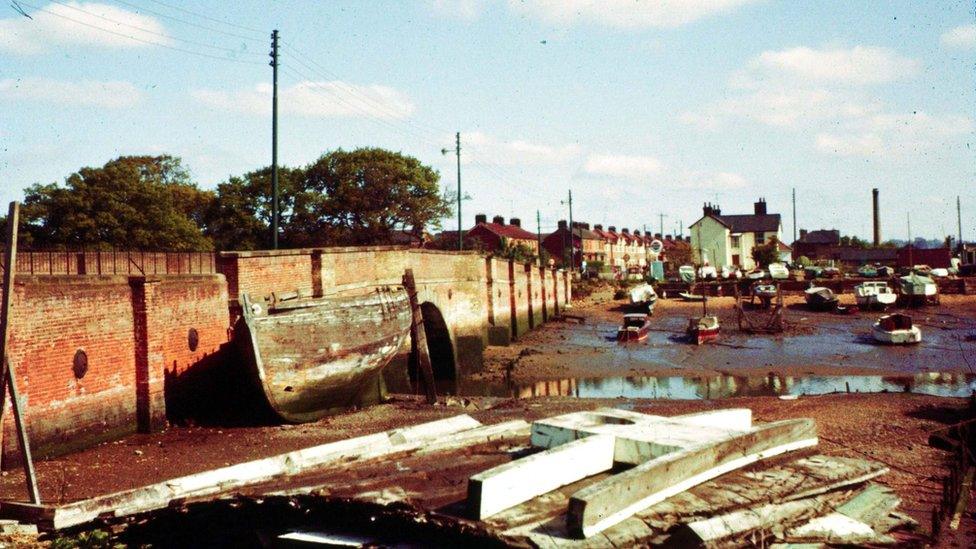
Bourne Bridge in the 1960s, looking north towards Wherstead Road, with the Orwell Yacht Club on the opposite bank
The decaying idyll of riverbank and idle boats is warmly seen here.
Only a little of the late 20th Century reveals itself, even the filmy Fina sign near the centre does not betray the charm and chaos of such a sight.
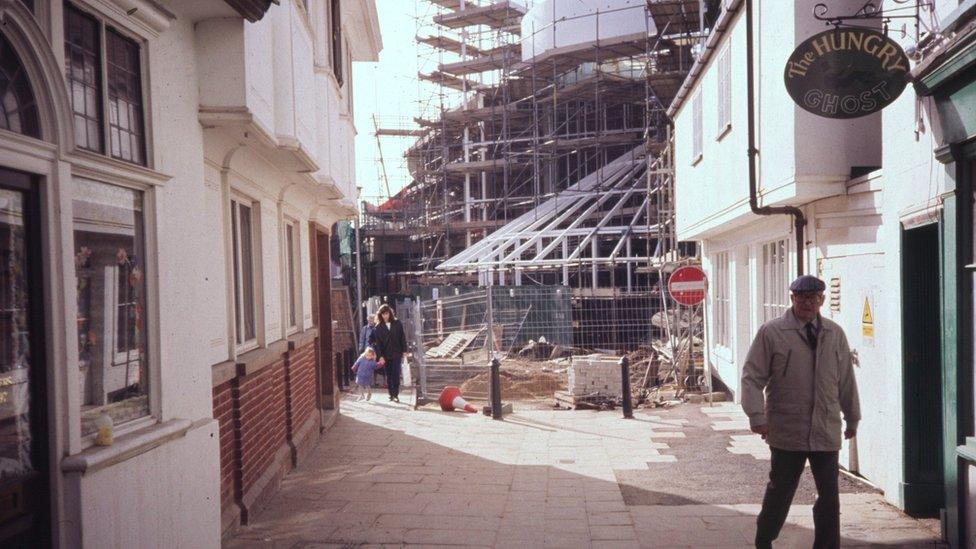
St Stephens Lane, early 1990s
An interesting juxtaposition here: the new Buttermarket shopping centre going up adjacent to the 15th Century Ancient House, which at that time was a bookshop, on the site of the Whitefriars Priory, founded in the 13th Century.
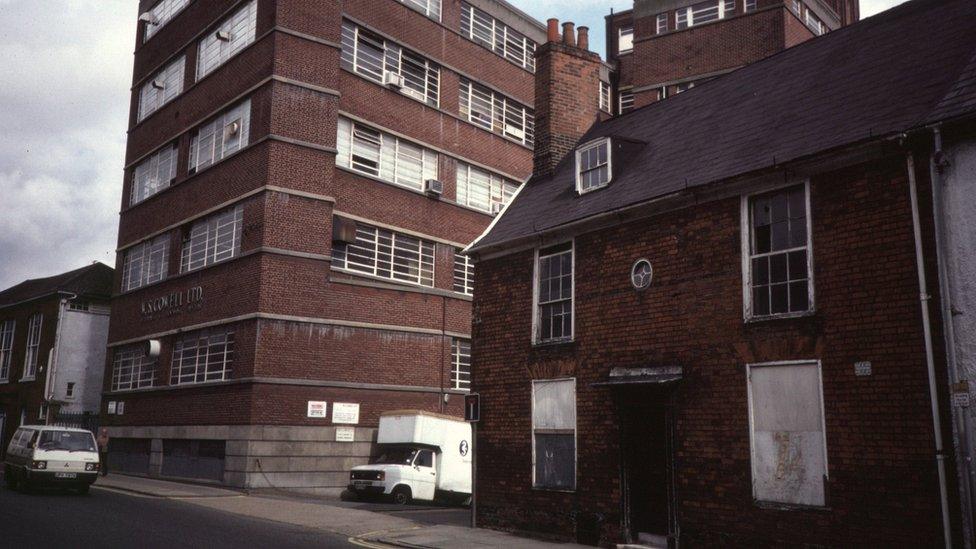
Falcon Street, 1980s
A few years earlier, WS Cowells printing works (left) sat on the corner of Market Lane. It is fascinating to think that a factory of such size should occupy a central position on Falcon Street.
But its reputation as a fine lithographic printing company did not spare its demolition, along with the building on the right, to make space for the Buttermarket.

Thames Sailing barges gather in the wet dock in the 1970s for the annual Pin Mill Barge Match
This is a beautiful photograph which has classic qualities of the work of a great painter of the 19th Century.
Despite the cars and road sign in evidence, the water reflections and the state of the dockside to the left are especially charming.
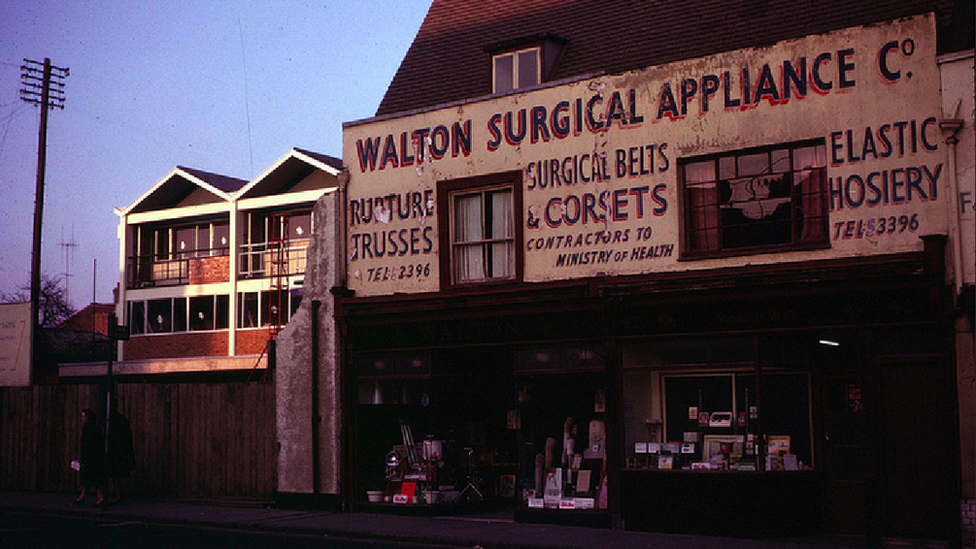
St Matthew's Street, 1963
The construction of the new line of shops on the north side of St Matthew's Street is under way behind Walton Surgical Appliance shop.
The space to the left was occupied by the 16th Century Golden Fleece Inn, which was one of the first victims of the clearance of the area. BBC Radio Suffolk premises were subsequently constructed in the open space to the left of the new shops.
It is a further juxtaposition of the old town and the arrival of the modern era.
You can take a look at some 'then and now' photos of Ipswich, or visit the Ipswich Society's Flickr profile, external for the entire archive.